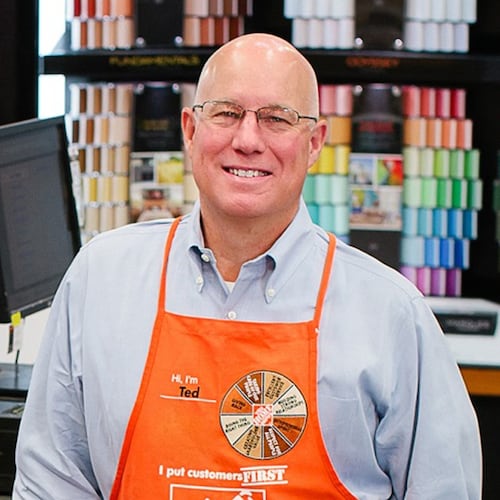With airport security back in the spotlight lately, the wide variety of technologies used at checkpoints is coming under scrutiny.
Since Sept. 11, the Transportation Security Administration has tried an array of machines and devices to screen passengers and baggage at Hartsfield-Jackson International and other airports.
Some of the equipment, such as the metal detector, is familiar.
“If we look at the various technologies . . . among the most effective and most reliable ones are the ones that are the least complex,” said Marc Rotenberg, executive director of EPIC, a Washington research organization that focuses on privacy and civil liberties issues.
“The metal detector is actually very reliable at detecting things like guns and knives that shouldn’t go on airplanes.”
Other types of screening are in use but aren’t a regular part of the screening process. Some are used only when travelers are pulled aside for extra screening, some are in pilot phases with limited rollouts and other equipment has fallen out of favor.
In the wake of the attempted Dec. 25 attack by the so-called “undie-bomber,” what’s drawing the most attention is a TSA plan to add hundreds more machines that show images of passengers beneath their clothes. That idea raises privacy concerns.
“It strip searches you,” said Doug Laird, a security consultant. “The problem is, if you want to keep bombs off airplanes, that’s what you have to do.”
Full-body imaging machines are just one type of screening technology TSA uses. Here’s a summary of what’s at Hartsfield-Jackson and other airports:
Baggage X-ray systems
and metal detectors
These workhorse machines provide clearer, high-definition X-ray images with multiple views. Older X-ray machines use a single, top-down X-ray view. The TSA also uses automated explosives detection software on the scanned images to improve the ability to detect potential threat items. The agency installed the new machines at Hartsfield-Jackson in 2008 and uses them as first-level screening at passenger checkpoints. Some airports still use older X-ray machines.
Advanced Technology X-ray systems can also be upgraded and reprogrammed with new software as capabilities improve. With upgrades, “we are hopeful that the technology will rapidly develop to help things [like laptops and liquids] stay in bags,” said Brook Miller, vice president of Smiths Detection, which sells the X-ray machines and other equipment to TSA.
Bottled liquid scanners
TSA in 2007 began pilot testing liquid explosives screening technology at airports and now has devices deployed at Hartsfield-Jackson. TSA uses the screeners mainly to screen medically necessary liquids greater than the allotted 3 oz., and can differentiate liquid explosives from benign liquids. TSA is also testing new liquid screening systems that use light waves to screen sealed containers and have better detection capabilities. The agency announced in October it will spend $22 million on additional bottled liquid scanners.
Full-body scanners
Full-body scanners use radio waves or low-level X-rays that penetrate clothing to hunt for bombs and other weapons hidden on passengers’ bodies.
The TSA has 40 full-body scanner machines at 19 airports around the country, including three at Hartsfield-Jackson. At Hartsfield-Jackson and most other airports with the machines, they are used for secondary screening if a metal detector alarm goes off, or for random screening. Passengers can opt for a different screening, including a pat down.
The agency plans to buy another 450 full-body scanners.
The TSA has said the machines are delivered with certain functions disabled, so that they cannot store, print, transmit or save the images.
Explosives trace detection machines
Screeners may also inspect some passengers’ carry-on bags with explosives trace detection equipment, which is about the size of a large suitcase. To use it, the security officer swabs a piece of luggage and uses a portable explosives trace detection machine to analyze it for traces of explosives. TSA has been testing upgraded models of explosives trace detection equipment and last fall said it will spend $15 million on new units.
Puffers
Explosives trace portals, more commonly known as puffers, were deployed at airports around the country starting in 2004, but never deployed at Hartsfield-Jackson. TSA spent $29.6 million on the units, including millions for maintenance, and 100 machines were deployed. A passenger walks into the machine, then several puffs of air are released to shake loose explosive particles. But after finding that the machines were too sensitive to the dirt and humidity in the crowded airport environment, leading to maintenance problems, the TSA in 2008 decided to phase out the technology.
What may be coming
● An Atlanta-based company called ScanTech Holdings says its Sentinel carry-on bag scanner generates a 3-dimensional map that allows it to differentiate between threatening and non-threatening materials, such as explosives versus face cream. That could allow passengers to be able to carry liquids again in their carry-on bags without the same restrictions.
● Brijot Imaging Systems, based in Lake Mary, Fla., says it has a system that can scan bodies to detect hidden liquids and powders but show only blurred figures of bodies. They are used in places like courthouses and Army installations and at airports in the United Kingdom, but not at airports.
● Intellicheck Mobilisa, based in Port Towsend, Wash., says its handheld Defense ID device can scan driver licenses against watch databases and immediately determine if the ID is fake or if the person has outstanding warrants. The technology is being rolled out at a number of military bases. Currently, the TSA checks passenger names against watch lists after a ticket is purchased and before a boarding pass is issued.
About the Author
Keep Reading
The Latest
Featured


